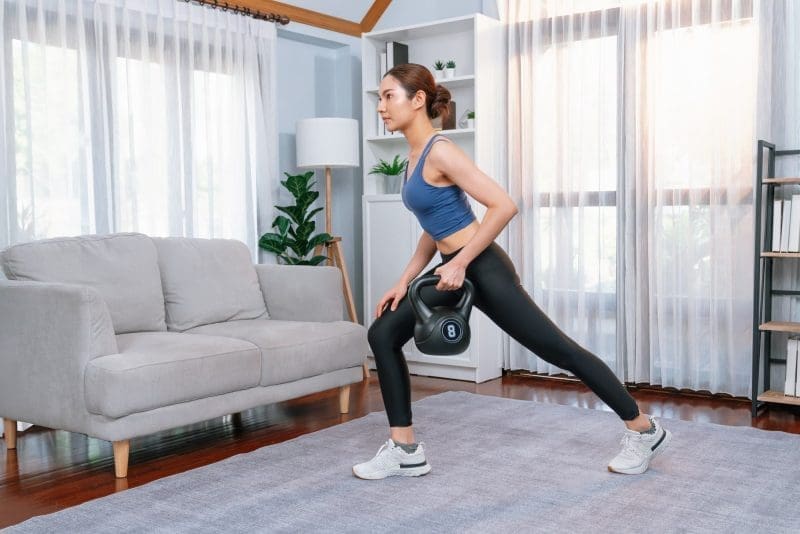The thought of building a home gym can often feel daunting and laden with financial concerns. However, the quest for fitness doesn’t have to break the bank. This guide will not only debunk the myth that a home gym requires a hefty investment but will also show you how to cleverly utilize available space and resources. Whether you’re a fitness enthusiast looking to avoid crowded gyms or someone trying to find a more convenient way to maintain a healthy lifestyle, this article is your first step toward building a home gym without emptying your wallet.
Get The Machines You Need
Identifying the right equipment is crucial for a home gym setup. Start with the basics—consider a versatile piece of machinery like a multi-gym, which allows for a variety of exercises without taking up too much space. Prioritize equipment that matches your fitness goals; if you’re into cardio, a second-hand treadmill or a stationary bike might be just what you need. The team behind Strength Warehouse USA says that cable machines are a common choice among home gym owners as they offer a range of exercises for both the upper and lower body. Additionally, dumbbells and resistance bands can be used to target specific muscle groups and are relatively inexpensive.
Set Your Budget
Establishing a budget is a foundational step in creating your affordable home gym. It’s essential to know how much you can realistically allocate without straining your finances. Start by outlining all potential expenses, including equipment, flooring, mirrors, and any alterations your space might need. The goal is to build a gym that meets your fitness requirements without overspending. There’s no need to purchase everything at once; consider starting with the essentials and gradually adding equipment as your budget allows. Keep an eye out for sales, second-hand deals, and discount offers to make the most of your investment. With a clear budget in place, you’ll avoid financial stress and focus more on achieving your fitness goals.
DIY and Repurpose
The DIY approach can be a game-changer when setting up your home gym on a budget. Instead of purchasing everything new, consider how you can repurpose items you already own or how you can craft your gym equipment. For example, a sturdy chair can double as a bench for step-ups or tricep dips, and large water bottles filled with sand or water can serve as makeshift weights. Additionally, installing a pull-up bar doesn’t need to be an expensive venture; with some basic tools and materials, you can create a durable setup right in your door frame. Look for online tutorials and guides that offer step-by-step instructions on how to make your equipment.
Utilize Free or Low-Cost Resources
Expanding your home gym doesn’t necessarily mean you have to spend a fortune on brand-new equipment. The internet is a treasure trove of free or low-cost resources that can significantly enhance your workout routine without the need for expensive gear. Look for fitness apps or online platforms offering free workout programs tailored to minimal equipment.
Additionally, social media and video-sharing sites are filled with professional trainers providing free tutorials and classes that can guide you through effective workouts using common household items or no equipment at all. Don’t underestimate the power of the great outdoors; running, walking, and bodyweight exercises in a local park can complement your home gym efforts beautifully. Leveraging these resources not only saves money but also introduces variety into your fitness regimen, keeping you motivated and engaged.

Create a Functional Layout
Designing a functional layout for your home gym is vital to maximizing the usability of the space while ensuring safety and efficiency during workouts. Begin by assessing the area available to you, taking into consideration not just the floor space but also the height of the room for equipment like pull-up bars or when performing overhead exercises. Allocate specific zones for different types of workouts—have a cardio corner, a strength training area, and a flexible space for yoga or pilates. This doesn’t mean you need vast amounts of room; even in smaller spaces, smart organization can make a significant difference.
Ensure there’s enough clearance around each piece of equipment to use it safely and effectively. If space allows, consider adding a mirror to the strength training area to monitor your form and technique. Storage solutions are also key. Use shelves, hooks, or bins to keep smaller items like dumbbells, resistance bands, and yoga mats organized and easily accessible. The goal is to create an environment that is inviting and inspires you to work while being practical and tailored to your fitness needs. By thoughtfully arranging your home gym, you can make the most of your space and enjoy a seamless exercise experience.
Building an affordable home gym is not only feasible but also a smart and rewarding investment in your health and well-being. With careful planning, prioritizing essential equipment, utilizing available resources, and creating a functional layout, you can create a much-needed fitness space without breaking the bank.


